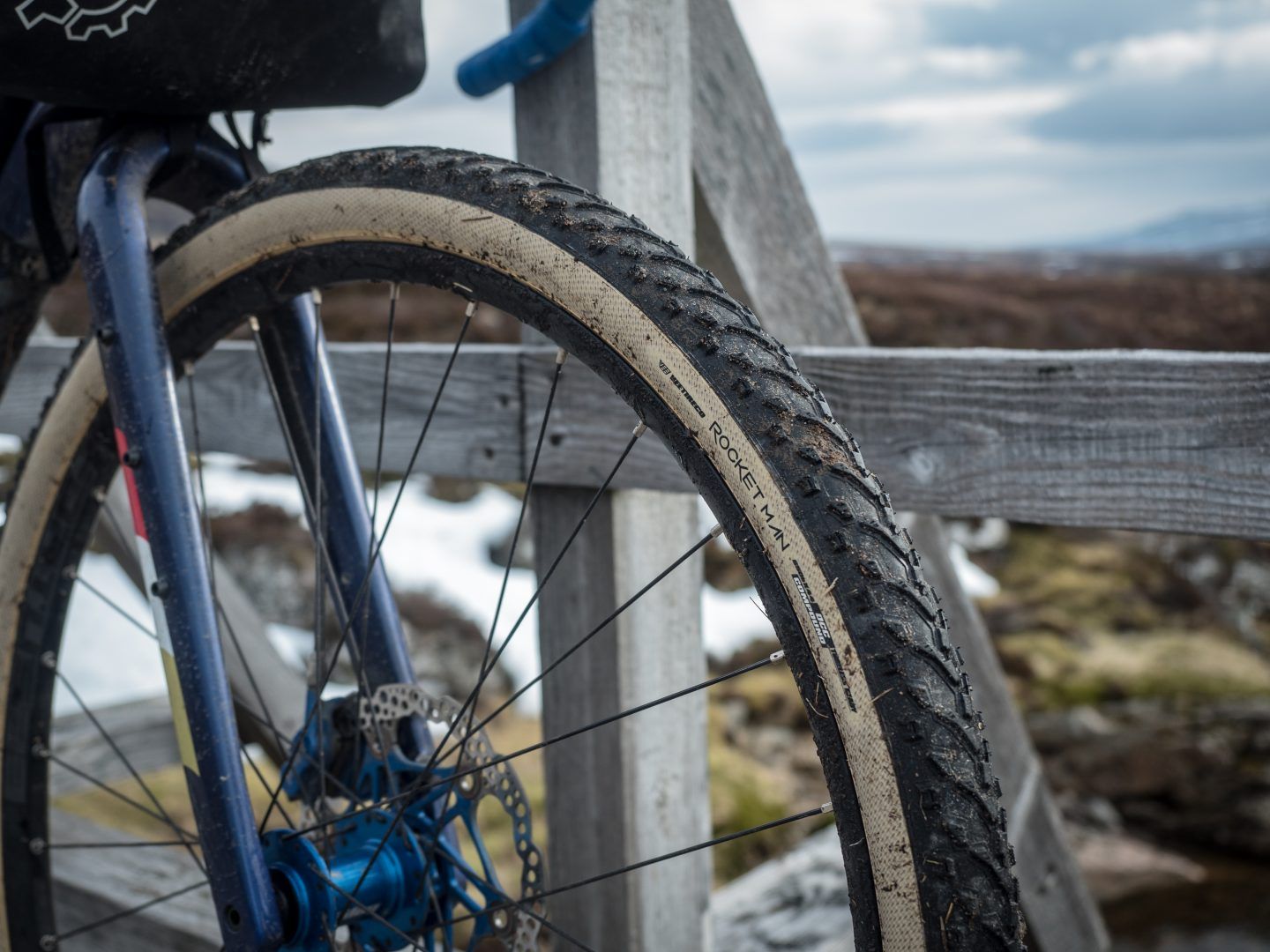Apparently Vee Tire make a gravel option, who knew? The Thai manufacturer has a fairly long history making tyres for motorbikes and cars, and in recent years they’ve been making inroads into the bicycle market, even if they’re not as commonly seen as other, more established brands. Details were thin on the ground for these Rocketman gravel tyres – a quick Google search doesn’t show any retailers stocking them in the UK, and they’re not listed yet on Vee’s own site. They arrived with no packaging other than a rubber band around them, which now I come to think about is a welcome thing. A chat with the UK distributor confirmed that these are a new tyre, and as with anything bike-related right now there is a delay on getting them into the country, but RRP is expected to be around the £40 mark.

Vee Tire Rocketman Specification as tested
- 650b x 44mm
- 72tpi
- Dual compound with aramid protection
- Claimed weight: 520g. Measured weight: 492g
- RRP ~ £40
- From: www.veetireco.co.uk
Vee also makes an MTB version of the Rocketman, claiming that its tread offers low rolling resistance and ‘enough grip for the surface of Mars’. I assume they’re collaborating with NASA’s Perseverance rover on that front. The dual compound tread pattern is fairly aggressive for gravel with tall, widely-spaced lugs that bear more than a passing resemblance to CX tyres, while overlapping V-shaped blocks down the central tread promise at least reasonable rolling speed. Underpinning the tread, a bead-to-bead aramid layer gives a degree of reinforcement and puncture protection. For a 650b tyre, the one available width is unusual: at just 44mm (which inflated true to size on a 23mm rim), they’re on the skinny side. Even more interestingly, the 700c version also comes in a 44mm width, which begs the question: what advantage is there in running the 650b tyre? Perhaps riding them would provide the answer.
Fitting and Riding
The Rocketman(s? Rocketmen?) were easy enough to fit and inflate, at which point their slim profile became apparent. The tan sidewall is more of an undercooked chicken colour, but air retention was fairly good, needing a top-up every week or so.
The 72tpi casing is supple – similar to WTB’s TCS Light casing in feel and weight – and gives a smooth ride, meaning that I could keep the tyres at higher pressures to preserve rolling speed without giving up too much comfort. Given the aggressive tread, I was impressed by how quick and how quiet they were on tarmac. At the same time, the shoulder blocks were welcome during the tail end of a Scottish winter, when random patches of mud and slop were still present at the worst possible moments. They performed well on those softer, ‘through the woods’ sections of singletrack that we all take our gravel bikes along from time to time. For all that the tread performed well, on chunkier surfaces the relatively light casing combines with the low volume to give a less sure-footed ride, and while my own clumsiness was undoubtedly a factor I did get a couple of unexpected punctures during the test period.
There’s no getting around the width issue, and after a month or so of riding I was still scratching my head as to why I would want to run these instead of the 700c version. The aggressive tread performs well, the casing is great for non-rocky terrain, but the volume lets them down a little. The main advantage of choosing a 650b wheelset on a gravel bike that can accept mixed sizes is to gain increased tyre clearance. My own frame will clear a 700c x 45mm tyre, but a 51mm tyre in the smaller wheel size. Why, then, would I want a tyre with poorer rollover for no increase in volume? Answers on a postcard please. It may well be that there are frames whose maximum tyre size is 650b x 44mm, and for you these might just work a treat. Even more intriguing, the ‘MTB’ version is available in 27.5 x 1.95, aka 650b x 50mm. It uses a 120tpi casing and somehow lowers the weight to 435g, which might solve the volume issue but makes me dubious if they have an even thinner casing than these. I suspect the Rocketman would be a great tyre for UK conditions in its 700c guise.
Overall
While the tread pattern and casing performed well on smoother surfaces, the only drawback I found to the Rocketman was that lack of girth. Unless you do happen to ride a frame with tight clearances (or want to run fenders with your 650b setup), it’s hard to see why you wouldn’t choose a larger tyre. Riding it back to back with the Hutchinson Touaregs made that twitchiness on rockier routes very obvious. Happily this is not the only size available, and for riders whose local gravel loops contain softer surfaces where more traditional gravel treads might lack some bite, the Rocketman occupies a fast-rolling, just-aggressive-enough niche. The 27.5 MTB version and the 700c versions would definitely merit some investigation.














Aaaaaaaah guys it would be great if you replaced the CX articles with proper mountain bike articles which is the essence of Singletrack! Or replace CX with some good old XC content. As this article says it so well, CX is a niche market. I’m tempted to say CX is for roadies.
@ceds … … bit of a troll comment there! This is on the GritCX channel rather than the main Singketrack reviews, and plenty of us also have gravel/cx bikes as well as MTBs. If you don’t want to read the reviews, don’t. Simples. Meanwhile, I’m all in favour if finding out which tyres will allow my curly-bar bike(s) to perform well off road.